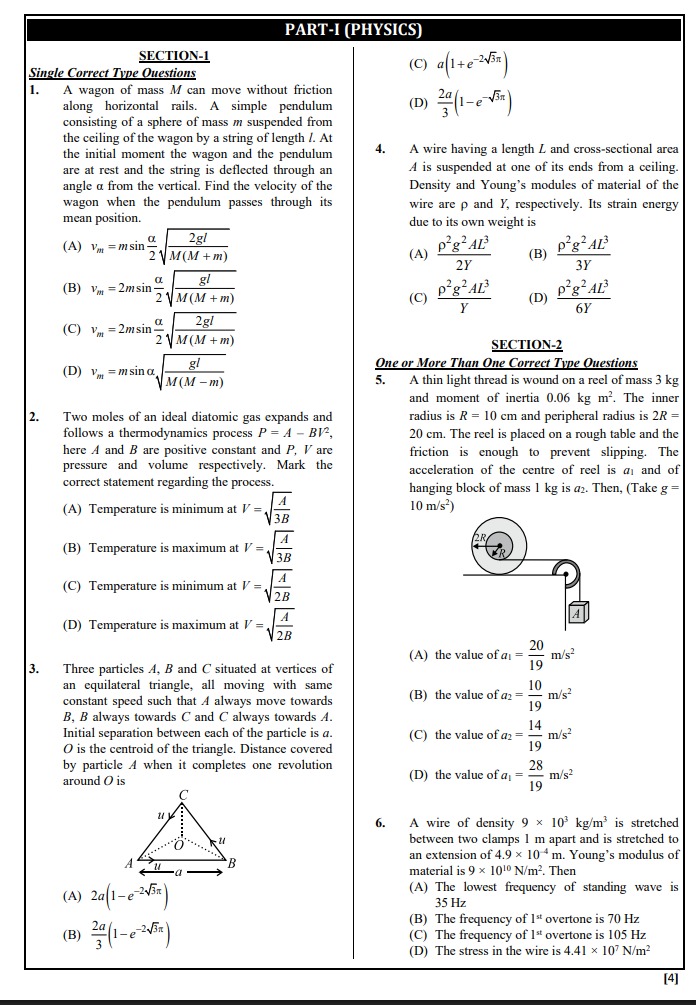Question
Question: A wagon of mass $M$ can move without friction along horizontal rails. A simple pendulum consisting o...
A wagon of mass M can move without friction along horizontal rails. A simple pendulum consisting of a sphere of mass m suspended from the ceiling of the wagon by a string of length l. At the initial moment the wagon and the pendulum are at rest and the string is deflected through an angle α from the vertical. Find the velocity of the wagon when the pendulum passes through its mean position.

vm=msin2αM(M+m)2gl
vm=2msin2αM(M+m)gl
vm=2msin2αM(M+m)2gl
vm=msinαM(M−m)gl
B
Solution
Concepts: Conservation of horizontal momentum and conservation of mechanical energy.
Solution:
Let M be the mass of the wagon, m be the mass of the pendulum bob, and l be the length of the string.
Let vM be the velocity of the wagon when the pendulum passes through its mean position.
Let vrel be the velocity of the pendulum bob relative to the wagon at its mean position. The bob moves horizontally relative to the wagon.
The absolute velocity of the bob relative to the ground will be vb=vM−vrel (assuming the bob swings opposite to the wagon's motion, which is the case for the bob to gain maximum speed relative to the wagon).
-
Conservation of horizontal momentum:
Initially, the system (wagon + bob) is at rest, so initial momentum is 0.
Finally, the total horizontal momentum is MvM+m(vM−vrel).
0=MvM+m(vM−vrel)
(M+m)vM=mvrel
vrel=m(M+m)vM (Equation 1) -
Conservation of mechanical energy:
Initial potential energy of the bob (taking the mean position as zero potential energy) is mgl(1−cosα).
Initial kinetic energy of the system is 0.
Final potential energy of the bob is 0.
Final kinetic energy of the system is 21MvM2+21m(vM−vrel)2.
mgl(1−cosα)=21MvM2+21m(vM−vrel)2
Substitute vrel from Equation 1 into the energy equation:
mgl(1−cosα)=21MvM2+21m(vM−m(M+m)vM)2
mgl(1−cosα)=21MvM2+21m(mmvM−MvM−mvM)2
mgl(1−cosα)=21MvM2+21m(m−MvM)2
mgl(1−cosα)=21MvM2+21mm2M2vM2
mgl(1−cosα)=21MvM2+21mM2vM2
mgl(1−cosα)=21vM2(M+mM2)
mgl(1−cosα)=21vM2(mMm+M2)
mgl(1−cosα)=21vM2mM(m+M)
vM2=M(M+m)2m2gl(1−cosα)
Using the trigonometric identity 1−cosα=2sin2(α/2):
vM2=M(M+m)2m2gl(2sin2(α/2))
vM2=M(M+m)4m2glsin2(α/2)
vM=M(M+m)4m2glsin2(α/2)
vM=2msin(α/2)M(M+m)gl
